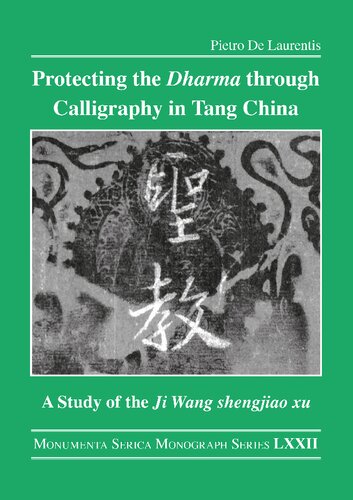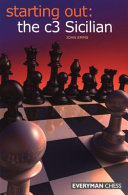Protecting the Dharma through Calligraphy in Tang China 1st Edition by Pietro De Laurentis ISBN 1000488640 9781000488647
$50.00 Original price was: $50.00.$25.00Current price is: $25.00.
Protecting the Dharma through Calligraphy in Tang China 1st Edition by Pietro De Laurentis – Ebook PDF Instant Download/Delivery: 1000488640, 9781000488647
Full download Protecting the Dharma through Calligraphy in Tang China 1st Edition after payment
Product details:
ISBN 10: 1000488640
ISBN 13: 9781000488647
Author: Pietro De Laurentis
Protecting the Dharma through Calligraphy in Tang China 1st Edition: This is a study of the earliest and finest collated inscription in the history of Chinese calligraphy, the Ji Wang shengjiao xu 集王聖教序 (Preface to the Sacred Teaching Scriptures Translated by Xuanzang in Wang Xizhi’s Collated Characters), which was erected on January 1, 673. The stele records the two texts written by the Tang emperors Taizong (599–649) and Gaozong (628–683) in honor of the monk Xuanzang (d. 664) and the Buddhist scripture Xin jing (Heart Sutra), collated in the semi-cursive characters of the great master of Chinese calligraphy, Wang Xizhi (303–361). It is thus a Buddhist inscription that combines Buddhist authority, political power, and artistic charm in one single monument. The present book reconstructs the multifaceted context in which the stele was devised, aiming at highlighting the specific role calligraphy played in the propagation and protection of Buddhism in medieval China.
Protecting the Dharma through Calligraphy in Tang China 1st Edition Table of contents:
Chapter One Buddhism and Calligraphy in Medieval China
- 1.1 Buddhism and Manuscript Production
- 1.2 Buddhism and Stone Inscriptions
- 1.2.1 Buddhism and Ink Rubbings
- 1.3 Overview of Buddhism and Calligraphy in Medieval China
- 1.3.1 Buddhist Monk-Calligraphers
- 1.3.2 Buddhism and the People in Charge of Handwriting
- 1.4 Buddhist Calligraphy: Buddhism Adapting to Chinese Culture
Chapter Two Wang Xizhi’s Calligraphy and the Semi-cursive Script (Xingshu 行書)
- 2.1 The Importance of Chinese Calligraphy in East Asian Art and the Principles of Its Appreciation
- 2.2 Wang Xizhi and the Chinese Calligraphic Tradition
- 2.3 Origin and Definition of the Semi-cursive Script
- 2.4 History of the Semi-cursive Script
- 2.5 Conclusion: Wang Xizhi as the Aesthetic Norm of the Semi-cursive Script
Chapter Three The Ji Wang Shengjiao Xu and Its Texts
- 3.1 Where and When the Preface and the Note Were Composed
- 3.2 Taizong’s Agreement to Compose the Preface and His Understanding of Buddhism
- 3.3 Taizong’s Support of Xuanzang and Buddhism
- 3.4 The Inclusion of the Preface and the Note into the Buddhist Scriptures
- 3.5 The Preface and the Note Carved in Stone
- 3.6 The Other Prefaces Composed after Taizong and the Shift of the Preface from Buddhism to Calligraphy
- 3.7 The Letters Exchanged between Xuanzang and Taizong, and Xuanzang and Gaozong
- 3.8 The Xin Jing (Heart Sutra)
- 3.9 Conclusion of Chapter Three
Chapter Four The Context of the Erection of the Ji Wang Shengjiao Xu
- 4.1 Devising the Ji Wang Shengjiao Xu
- 4.2 Daoism during Gaozong’s and Empress Wu Zetian’s Reigns (649–690)
- 4.3 Buddhism under the Threat of Gaozong’s and Empress Wu Zetian’s Pro-Daoist Policies
- 4.4 The Consolidation of the Chinese Identity of Buddhism through the Appropriation of Wang Xizhi’s Calligraphic Style
- 4.5 The Ji Wang Shengjiao Xu as a Monument Claiming Imperial Patronage and Public Recognition
- 4.6 Protecting and Spreading the Dharma through Calligraphy: The Intended Outcomes of the Erection of the Ji Wang Shengjiao Xu
- 4.7 Conclusion of Chapter Four
Chapter Five A History of the Location of the Ji Wang Shengjiao Xu
- 5.1 The Hongfu Si and Its History (632/634–845)
- 5.2 The Hongfu Si and Its Monks
- 5.3 The So-called Xingfu Si Banjie Bei and Its Relation to the Ji Wang Shengjiao Xu
- 5.4 The Location of the Ji Wang Shengjiao Xu after the Anti-Buddhist Persecution of 845 and Its Removal to the Confucius Temple
- 5.5 Conclusion of Chapter Five
Chapter Six The Collation of Wang Xizhi’s Characters for the Ji Wang Shengjiao Xu
- 6.1 A History of Collated Characters
- 6.2 The Semi-cursive Script and the Ji Wang Shengjiao Xu
- 6.3 Wang Xizhi’s Works in the Semi-cursive
- 6.4 The Textual Sources for the Characters Used in the Texts Recorded in the Ji Wang Shengjiao Xu
- 6.5 The Authenticity of the Characters Used in the Ji Wang Shengjiao Xu
- 6.6 How Huairen Produced the Inscription
- 6.7 Conclusion of Chapter Six
Chapter Seven The Carving of the Ji Wang Shengjiao Xu
- 7.1 Transferring and Engraving: Le 勒 and Ke 刻
- 7.2 The Transfer of Characters onto Stone
- 7.3 The Time Required for the Construction of a Stone Inscription
- 7.4 Conclusion: An Inscription’s Faithfulness in the Reproduction of Original Handwriting
Chapter Eight The Shape and the Calligraphy of the Ji Wang Shengjiao Xu
- 8.1 The Importance of the Ji Wang Shengjiao Xu in the History of Chinese Calligraphy
- 8.2 General Overview of the Stone Inscription and of the Characters of the Ji Wang Shengjiao Xu
- 8.3 The Rubbings of the Ji Wang Shengjiao Xu and the Early State of the Inscription
- 8.4 The Rubbings of the Ji Wang Shengjiao Xu and Their Figures
- 8.4.1 Beilin Ji Wang 1 and Mitsui Ji Wang 1 in Comparison
- 8.4.2 Zhang Yingzhao Ji Wang and Mitsui Ji Wang 1 in Comparison
- 8.5 The Characters of the Ji Wang Shengjiao Xu and the Reproduction of Wang Xizhi’s Handwriting
- 8.6 Carving Mistakes in the Ji Wang Shengjiao Xu
- 8.7 The Characters of the Ji Wang Shengjiao Xu and Wang Xizhi’s Calligraphic Art
- 8.8 The Graphic Adjustment of Characters in the Ji Wang Shengjiao Xu
- 8.9 The Ji Wang Shengjiao Xu and Wang Xizhi’s Extant Semi-cursive Works
- 8.10 Conclusion: Huairen or Wang Xizhi as Calligrapher of the Ji Wang Shengjiao Xu?
People also search for Protecting the Dharma through Calligraphy in Tang China 1st Edition:
how to write a dharma talk
dharma protectors
protection chanting
a practical guide to evil quotes
what is a dharma protector
Tags:
Pietro De Laurentis,Protecting,Dharma,Calligraphy,Tang China
You may also like…
Business & Economics - Job Hunting & Careers
Uncategorized
Housekeeping & Leisure - Games: Chess
Housekeeping & Leisure - Games: Chess
Fantasy - Other Fantasy Fiction Categories
Lightspeed Magazine Issue 80 January 2017 1st Edition John Joseph Adams Ed
Romance - Collections & Anthologies
If Looks Could Kill 80 s Baby Series 2 1st Edition Tamrin Banks
Computers - Programming











